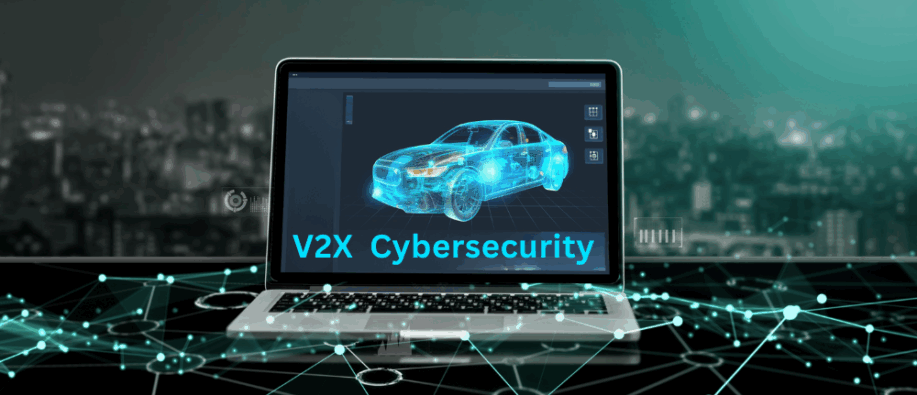As the name suggests, Vehicle-to-Everything (V2X) is a cutting-edge technology. The main advantage of V2X is that it allows cars to communicate with a variety of objects, such as other cars, networks, road infrastructure, and more.
So, transportation and autonomous driving have become super easy with this technology. In V2X, the interaction between different components helps reduce traffic and congestion and enhance the mobility and security of modern vehicles. Moreover, on the other hand, hyperconnectivity raises security issues that shouldn’t be overlooked, including malware injections, spoofing, unauthorized access, and various types of cybersecurity concerns.
We’ve an interesting blog cover that will give you an idea about V2X Vehicle-to-Vehicle cybersecurity, the challenges that come along, and how we can overcome them with the right solution.
Explaining V2X (Vehicle to Everything) and Its Importance
V2X (Vehicle-to-Everything) refers to the connection of a vehicle with other entities in the surrounding environment. The aim is to make road safety safer, enable autonomous driving, and decrease congestion, as we previously mentioned. In V2X the system can share real-time data among other vehicles and the infrastructure.
Considering the information about surrounding vehicles and infrastructure, vehicles have a clear understanding of the traffic, which helps them prevent accidents and leads to better transportation.
Key Components of V2X Cybersecurity
Following are some of the key components of the V2X system:
1] Public Key Infrastructure (PKI)
Provides authentication and secure communication. Alongside, it offers digital certificates to vehicles and infrastructure nodes.
2] Digital Certificates and Authentication
It ensures that only authorized entities can participate in real-time V2X communication.
3] Message Integrity and Non-Repudiation
Ensures that V2X messages being communicated have not had their contents altered while in their encrypted state. Further, through digital signatures, V2X messages maintain proof of origin and integrity.
4] Data Encryption
During the communication of sensitive data, such as speed and location, the contents will be protected.
5] Anomaly Detection Systems (ADS)
It helps in monitoring V2X communication for unusual behavior or traffic patterns.
Cybersecurity Challenges Associated with V2X
Several challenges arise when it comes to autonomous vehicles. Here we have listed them:
1] Spoofing Attacks
The first is malicious actors, who mimic legitimate vehicles or roadside units. Here, false messages are sent to misguide the systems—for example, false locations.
Solution:
-
- To authenticate senders, make use of Public Key Infrastructure (PKI)
- Digital signatures can be used to confirm the source of the message.
2] Data Integrity & Message Tampering
During transmission, V2X messages can be intercepted and altered, resulting in inaccurate or deceptive safety information.
Solution:
-
- Using end-to-end encryption for protecting sensitive data.
- Message Authentication Codes (MACs) are utilized to provide integrity.
3] Denial-of-Service (DoS) Attacks
There is a risk of attackers flooding the V2X network with fake or numerous messages, disrupting the systems.
Solution:
-
- Implement traffic prioritization and rate-limiting procedures.
- Establish redundant lines of communication.
- Use intrusion detection systems to keep an eye out for unusual communication patterns (IDS).
4] Secure Key Management
Improper handling or storage of cryptographic keys can compromise security or lead to unauthorized access.
Solution:
-
- Using automated key lifecycle management
- Regular auditing of key usage and access
5] Firmware & Software Vulnerabilities
Bugs or backdoors vulnerabilities in the software for both On-Board Units (OBUs) and Roadside Units (RSUs) can be exploited if the device is not updated on a regular basis.
Solution:
-
- Allow secure booting for keeping away from unauthorized firmware execution.
- Offer over-the-air updates for rapid patching and maintenance.
- Conduct penetration testing on a regular basis.
Wrapping it Up
V2X is a standout technology in the transportation sector. Moreover, the cybersecurity issues discussed in the above blogs shouldn’t be overlooked. By building a secure cybersecurity framework in the V2X environment, we can create a more reliable vehicle communication ecosystem.
Stay tuned for more such informative blogs around the tech landscape right here.
Frequently Asked Questions:
Q1. What are the key limitations of V2X?
Answer: One of the key limitations of V2X is its network dependence.
Q2. What are the different types of V2X?
Answer: Here are the different types of V2X: V2N, V2I, V2V, V2C, V2P, V2D and V2G. Their deployment can be done using C-2VX or DSRC communication technologies.
Q3: What are the trends in V2X (Vehicle to Everything) technology?
Answer: The rising trends in V2X are cybersecurity, autonomous driving, adopting C-V2X (Cellular-V2X), and more.
Recommended For You:
Top 5 Open-Source Cybersecurity Tools You Can’t Afford to Miss
Exploring Cybersecurity for Small Businesses – Importance, Types of Threats, and Tips





